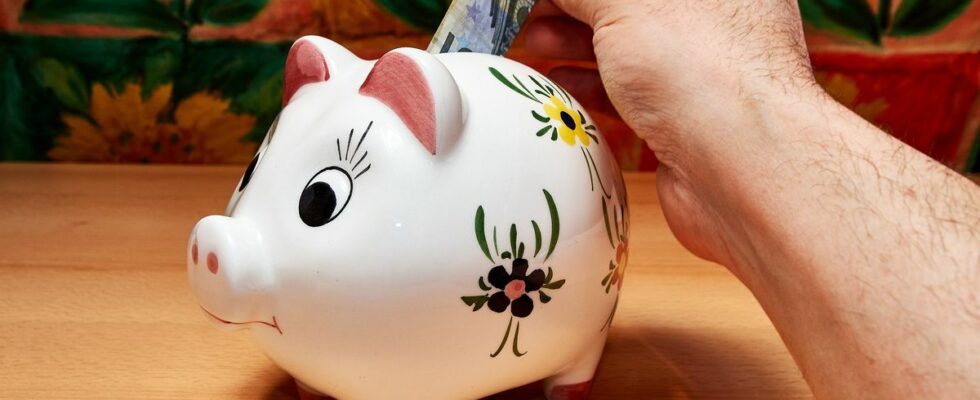If you think that the euros deposited on your Livret A sleep quietly all year round in a safe, you are greatly mistaken. Like the toys in Toy Story, your “saved” money actually has a parallel and rather active life as soon as your back is turned. It must be said that with a total of nearly 375 billion euros, the savings account most used by the French represents a real financial windfall that the State intends to use.
Out of 100 euros that you place in your livret A, 59.5 euros are used by the Caisse des Dépots et Consignations (CDC), a public institution tasked with managing savings. In detail, 35% of the total amount of Livrets A is used for social housing, i.e. around 130 billion euros, 17.41% finances State bonds (65 billion) and 5% is dedicated to loans for small businesses. and medium enterprises.
Financing social housing and government bonds
Not letting this money sleep responds above all to a need: that of financing unprofitable sectors in which the banks would be skeptical, such as social housing. “This avoids making loans on the markets, which are more fluctuating and risky”, attests Philippe Crevel, economist and director of the Cercle des épargnants. This social housing financing is in the form of a very long-term loan, between 25 and 60 years. “Social landlords always end up repaying,” reassures the economist And even if this were not the case, your precious euros have the best guarantor: the state.
The 65 billion in government bonds constitute a sort of safeguard. “This is money that can be recovered extremely quickly, unlike long-term loans for social housing”, develops Maxime Chipoy, president of MoneyVox, an internet guide explaining and comparing personal finance. This “therefore offers the possibility to the French to be able to withdraw part of their money from the booklet A, and even a large part”, supports Philippe Crével. Obviously, if all the French decided at the same time to withdraw all their money, “it would be impossible, but in such a bankruptcy scenario, it would be far from being the only problem”, smiles the economist.
The 39.5 euros left in the bank do not rest either. Since June 14, 2020, banks must place 80% of the outstanding amounts held in the Livret A and the sustainable and solidarity development booklet in loans for SMEs. 10% of deposits must finance ecological projects, without much precision. Finally, 5% of bank sums finance companies in the social and solidarity economy. What remains – ie 5% – is used at the discretion of the bank.
Nuclear power plants, new beneficiaries of the CDC?
The method therefore seems proven. So much so that a government reflection is underway to transpose the system to nuclear power plants, according to the echoes. The financing of the next six EPRs, these state-of-the-art generators, amounts to approximately 50 billion euros over the entire duration of the program, i.e. probably until 2050. “This loan by the CDC is envisaged because it is the only way to obtain such a long-term loan of 40 or 60 years, which fits well with this project, profitable only in the very long term, explains Maxime Chipoy. If a bank ventured to do that for an area as unprofitable as nuclear power plants, it would surely offer an even higher rate than the CDC. Hence the interest of going through this financing. »
Still, for the time being, many questions remain: on which tranche of the CDC would this amount be taken and above all how much would it be.

